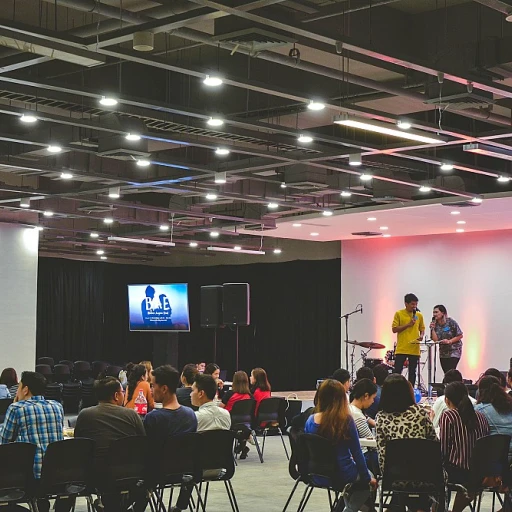
Defining Attrition in Reward Programs
Grasping the Concept of Attrition in Reward Programs
When it comes to understanding attrition within reward programs, it's important to first define what we mean by attrition. In this context, attrition refers to the progressive reduction in the number of employees participating in a reward program over time. This could be due to high turnover rates or a lack of engagement.
Many companies view attrition rates as an essential indicator of the effectiveness of their reward initiatives. A high attrition rate might signify flaws in the program's design, such as insufficient employee feedback or a lack of alignment with employee expectations. On the other hand, a low attrition rate generally reflects positively on employee retention and program success.
Moreover, attrition reward challenges are not limited to just recognizing excellence. Effective reward programs need to be strategically developed to enhance employee morale and support long-term company goals. Without the right strategies, businesses can struggle to maintain the number of employees engaged in these initiatives.
For a more concrete example, you can read about innovative approaches to recognizing excellence in businesses here, which highlight how some businesses successfully mitigate employee turnover within their reward systems.
Typical Attrition Percentage for Reward Programs
Understanding the Range of Attrition in Reward Programs
In the realm of reward programs, a typical attrition percentage can be an important indicator of their effectiveness. While the range can vary depending on the industry, company structure, and type of program, understanding these rates is crucial for businesses aiming to enhance employee retention and engagement. Reward programs are designed to motivate and retain employees. However, companies often face challenges when the attrition rate in these programs becomes too high. High turnover rates can lead to disruptions in the workplace, affecting not only employee satisfaction but also customer loyalty. Typically, the attrition rates for reward programs may range from 10% to 50%, though variations exist. This wide range highlights the importance of strategies that businesses can implement to keep employee attrition at bay, thereby fostering an environment that promotes long-term retention and commitment. To effectively manage these rates, companies must adopt strategies tailored to their unique business model and workforce dynamics. By doing so, they enhance employee engagement and minimize the turnover rate, ultimately leading to a more stable and motivated workforce. For companies unsure of where to begin, learning from successful reward programs that have managed to maintain low attrition rates can provide valuable insights. Integrating employee feedback and continuously adapting the programs can play a significant role in achieving this balance. For some creative ways to appreciate employees, you might consider looking into creative culinary ideas for Employee Appreciation Day, which can serve as inspiration (source). In summary, understanding the characteristics of typical attrition rates in reward programs and implementing effective strategies to reduce them is crucial for businesses seeking to bolster employee retention and satisfaction.Factors Influencing Attrition Rates
Key Influences on Attrition in Reward Programs
Understanding the factors that contribute to attrition rates in reward programs is crucial for companies aiming to maintain high employee retention and engagement. A high attrition rate can signal underlying issues within an organization’s reward strategies, employee engagement practices, or overall company culture. Here, we explore the main elements that influence these rates:- Intrinsic Employee Motivation: Employees who lack intrinsic motivation are more likely to disengage from reward programs, leading to higher attrition. This lack of motivation can stem from misaligned rewards that do not resonate with the employee's values or aspirations.
- Perceived Value of Rewards: The attractiveness and perceived value of the rewards offered significantly affect engagement levels. If employees deem the rewards insufficient or irrelevant, they may opt out of the program, thus increasing turnover rates.
- Feedback Mechanisms and Communication: Effective communication and feedback loops between companies and employees are vital for maintaining interest in reward programs. Lack of transparency and insufficient employee feedback can result in disinterest and eventual drop-out.
- Alignment with Career Goals: Programs that are not aligned with employees' professional growth can contribute to high attrition. Employees who do not see a long-term benefit or potential career advancement tied to rewards may lose interest quickly.
- Engagement Culture: A company that fosters an inclusive and engaging culture is more likely to retain employees in its reward programs. Conversely, businesses that do not prioritize employee engagement are more prone to facing challenges with attrition rates.
Impact of Attrition on Employer Branding
The Connection Between Attrition and Employer Branding
Understanding how attrition impacts employer branding is crucial for companies aiming to maintain a strong market presence. High attrition rates can signal underlying issues within an organization, affecting not only employee morale but also the company's reputation externally. When an employee leaves, the turnover rate increases, leading to consistently high attrition. This creates a cyclical challenge that can disrupt both employee engagement and customer loyalty. If an employee reward program fails to keep its participants motivated, it may result in dissatisfaction, causing elevated attrition rates. Companies that experience frequent employee turnover often struggle to attract new talent, as potential candidates are deterred by a tarnished brand image. This deterioration can impact customer trust as well, affecting long-term business growth and customer satisfaction. Enhanced employee feedback mechanisms and effective employee engagement initiatives are vital strategies in reducing these negative perceptions. To counter the negative ramifications that come with high attrition, businesses should adopt strategies to reduce the turnover rate. By addressing these challenges proactively through understanding and refining reward programs, companies not only work towards better retention rates but also cultivate a more appealing employer brand. In conclusion, the impact of attrition on employer branding is substantial. The focus should always be on creating retention strategies that enhance employee satisfaction and loyalty, ultimately leading to a positive company reputation.Strategies to Reduce Attrition
Proven Approaches to Keep Attrition at Bay
Reducing high attrition rates in reward programs demands strategic intervention. Companies that actively engage employees through thoughtful employee reward initiatives can make measurable progress towards enhancing retention rates and reducing turnover. Below are some effective strategies:- Understand Employee Needs: Delve into comprehensive assessments of employee desires and expectations surrounding reward programs. This understanding helps tailor programs that meet specific employee needs, thus enhancing employee engagement and retention.
- Enhance Communication: Open channels for employees to provide feedback about existing reward programs. Consistent employee feedback facilitates adjustments that could reduce turnover rates and ensure the programs are aligning with employee values.
- Implement Customized Rewards: Customize rewards to cater to diverse employee interests. Personalized reward initiatives often prove more effective, resulting in lower attrition rates and improved employee retention.
- Continuous Feedback Loop: Regularly collect and implement employee feedback to keep the reward programs relevant. This approach shows that the company values employee input, which can significantly impact attrition by fostering high employee loyalty.
- Measuring Program Effectiveness: Companies should continuously assess the impact of rewards programs on attrition. By analyzing the data and identifying trends, businesses can make informed decisions that align with their goals of reducing high attrition and promoting long-term employee retention.
- Fostering a Positive Work Culture: Creating an attractive work culture that prioritizes employee well-being can increase the efficacy of reward programs. Such environments typically enjoy lower employee turnover, as staff are more likely to stay with a company that supports their growth and values their contributions.













